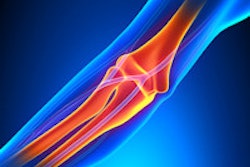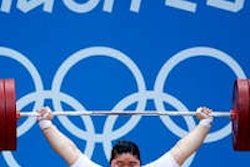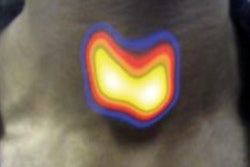
When it comes to elbow injuries, MRI and MR arthrography are the modalities of choice, but building up the all-important expertise is no simple task, according to researchers from Spain who received a prestigious magna cum laude award at ECR 2018.
"Anatomical and biomechanical knowledge of the support structures that provide stability to the medial and lateral elbow is essential to correctly interpret the pathological findings," noted lead presenter Dr. José Acosta Batlle, a radiologist at the Ramón y Cajal University Hospital, University of Alcala Henares in Madrid, and colleagues. "The anterior band of the collateral medial ligament complex is the main stabilizer against valgus and internal rotation stress."
The collateral lateral ligament complex plays a central role because it resists excessive and external rotational stress, which the lateral ulnar collateral ligament (LUCL) is the most important in terms of stability, they stated in an e-poster that aimed to provide a comprehensive overview of the normal anatomy and the biomechanics aspects of the medial and lateral collateral ligaments. The LUCL wraps around the posterior aspect of the radial neck.
Visualizing the anatomy
Protocols and pulse sequences for MR elbow exams
- Patient supine with the affected arm by the side of the body, elbow extension, and forearm in supination
- Make correct use of surface coils
- Matrix: 256 x 192 or 256 x 256
- Field-of-view: 12-14 cm
- Axial: slice thickness 4 mm
- Coronal and sagittal: slice thickness 3 mm
- 20° posterior oblique coronal plane in relation to the humeral shaft with the elbow extended or a coronal plane aligned with the humeral shaft with the elbow slightly flexed (20-30° of flexion)
- MR arthrography: axial, coronal, and sagittal fat-suppressed (FS) T1 fast spin-echo (FSE), and coronal FS T2 FSE or short-tau inversion recovery
The main objectives of Batlle and colleagues were to highlight technical aspects that optimize visualization of anatomic structures and to explain the spectrum of MRI findings of traumatic and overuse injuries. A clinical examination is a prerequisite for the assessment of tendon pathology in the elbow, and MRI is useful in the case of refractory symptoms, confounding cases, for a global overview, and for differential diagnosis. The flexed elbow, abducted shoulder, and forearm supinated position are useful for the evaluation of the distal biceps tendon.
The most common pattern of recurrent elbow instability is posterolateral rotary instability (PLRI). Stage 1 may include posterolateral subluxation of the ulna on the humerus and insufficiency or tearing of the LUCL. In stage 2, the elbow dislocates incompletely, there is tearing of the LUCL and radial collateral ligament (RCL), and the anterior and posterior capsules are disrupted. In stage 3, the elbow dislocates completely, and there is tearing of the LUCL, RCL, and articular capsule.
LUCL tears usually have a humeral origin, and can involve one or more of the three bundles, the authors continued.
"Failure to recognize radial collateral complex tears prior to surgical treatment of tennis elbow will lead to persistent postoperative symptoms," they noted. What's more, it's essential to be aware of any fall on an outstretched hand, as well as iatrogenic injury during release or repair of lateral epicondylitis, particularly in advanced cases of tennis elbow, they explained.
Characteristic bone bruises may occur to the posterior capitellum and the radial head.
Editor's note: To view the authors' wide range of clinical images and cases in the full e-poster from ECR 2018, click here.



















